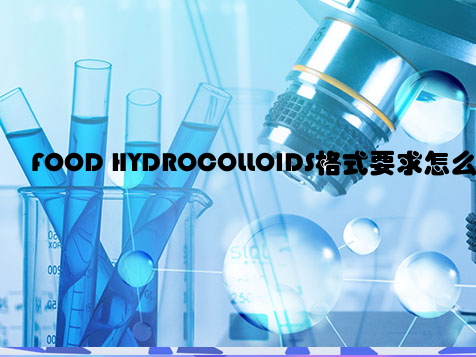FOOD HYDROCOLLOIDS
Food hydrocolloids are a group of polysaccharides and proteins that have the ability to form gels or viscous solutions when mixed with water. They are widely used in the food industry for their unique functional properties, including thickening, gelling, emulsifying, and stabilizing. In this article, we will explore the importance of food hydrocolloids in various food products and their impact on the overall quality and texture.

Types of Food Hydrocolloids
There are several types of food hydrocolloids, each with its own unique functional properties. Some common examples include agar, carrageenan, pectin, guar gum, xanthan gum, and cellulose derivatives. These hydrocolloids are derived from natural sources such as seaweeds, plants, and microbial fermentation. They are used in a wide range of food products, including dairy, bakery, confectionery, and meat products.
Functions in Food Products
Food hydrocolloids play crucial roles in the texture, stability, and sensory attributes of various food products. For example, in dairy products, they are used to improve mouthfeel and prevent syneresis. In baked goods, they can control moisture migration and improve the shelf life. In meat products, they can enhance water binding and improve the juiciness of the final product. Additionally, in confectionery, hydrocolloids are used to achieve the desired texture and mouthfeel.
Impact on Food Quality
The use of food hydrocolloids can significantly impact the overall quality of food products. They can improve the stability of emulsions, prevent crystallization, and enhance the texture of low-fat products. By controlling water mobility and viscosity, hydrocolloids contribute to the desired mouthfeel and sensory experience. Furthermore, they can also be used to reduce or replace certain ingredients, such as fat or sugar, without compromising on the sensory attributes of the product.
Challenges and Innovations
Despite their numerous benefits, the use of food hydrocolloids also presents some challenges. For instance, the appropriate selection and use of hydrocolloids require a deep understanding of their interactions with other ingredients and processing conditions. Additionally, the growing demand for natural and clean label products has led to the development of innovative hydrocolloid-based solutions that provide the desired functionalities while meeting consumer preferences for clean and simple ingredient lists.
Future Trends
Looking ahead, the use of food hydrocolloids is expected to continue growing, driven by the increasing demand for clean label products, plant-based alternatives, and functional foods. Innovations in hydrocolloid technology, such as the development of novel sources and the optimization of extraction and processing methods, will further expand their application in the food industry. As consumers continue to seek healthier and more sustainable options, food hydrocolloids will play a key role in meeting these evolving needs.
This article provides an overview of the significance of food hydrocolloids in various food products. From their unique functional properties to their impact on food quality and texture, it is clear that hydrocolloids are essential ingredients in the food industry. As technology and consumer preferences continue to evolve, so too will the role of food hydrocolloids in shaping the future of food products.



